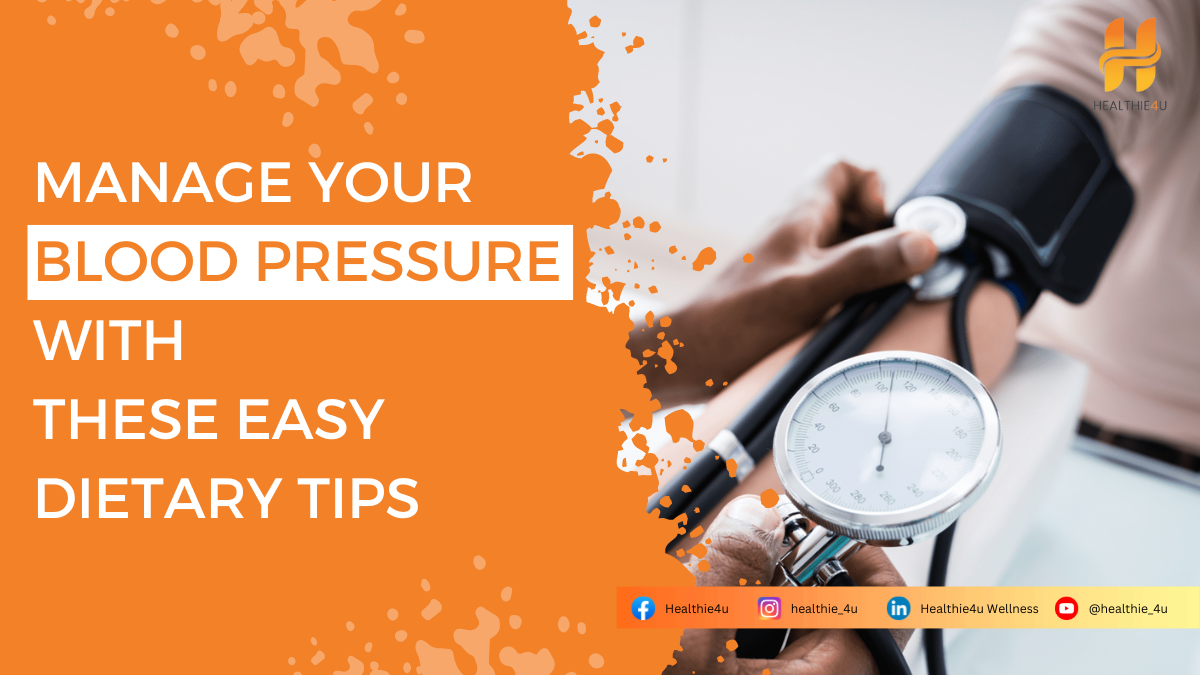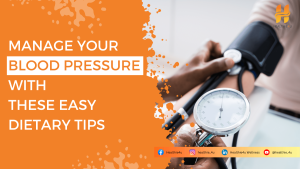

Hypertension, or high blood pressure, is generally defined as having a systolic blood pressure of 140 mm Hg or higher, or a diastolic blood pressure of 90 mm Hg or higher.
Types of blood pressure:
● Systolic pressure is the highest pressure in your blood vessels when your heart beats and pumps blood.
● Diastolic pressure is the lowest pressure in your blood vessels when your heart is resting between beats.
Common symptoms of hypertension include:
● Headache
● Dizziness or giddiness
● Racing heart (palpitations)
● Heaviness or pressure in the eyes
● Shortness of breath
● Digestive issues (like nausea or bloating)
While medication can be effective, making lifestyle changes, particularly dietary adjustments is essential for naturally managing blood pressure. Here are some dietary tips to help you maintain healthy blood pressure levels.
1. Follow the DASH diet-
The DASH diet is a way of eating that helps lower blood pressure. It encourages you to eat lots of fruits, veggies, whole grains, lean meats, and low-fat dairy. It also advises you to cut down on unhealthy fats, cholesterol, and salt.
2. Low Sodium intake-
It is recommended to limit your sodium intake to no more than 2300 mg. Those who are suffering from hypertension, sodium should be restricted to 1500 mg. Instead of salt, you can flavor your dishes with herbs, spices, lemon juice, or vinegar to enhance taste without adding sodium.
3. Increase your Potassium intake-
Potassium increases loss of water and sodium from the body. It helps balance the amount of sodium in your cells and can help lower blood pressure. Include potassium rich foods such as banana, oranges, spinach, sweet potatoes, chickpea, kidney beans, sunflower seeds, almonds, etc.
4. Include Fibre rich foods-
Higher fibre intake can increase nitric oxide, which is a vasodilator that helps manage blood pressure. Apple, beans, peas, carrots, oats, nuts, etc. are some of the good sources of fibre.
5. Incorporate Healthy fats-
Include healthy fats such as Omega- 3 fatty acids as it has vasodilatory effects. Food sources include salmon, tuna, mackerel, walnuts, flaxseeds, chia seeds, etc.
6. Limit Alcohol intake-
Drinking too much alcohol had adverse effects on blood pressure. Though there are guidelines regarding alcohol intake, it’s best to avoid it.
7. Start with physical activity-
Regular exercise is key to preventing and treating hypertension. It offers numerous health benefits and helps protect against high blood pressure and heart diseases. Indulge in at least 30 minutes of walking, swimming, bicycling, jogging, etc.
8. Quit Smoking-
Nicotine stimulates the release of adrenaline, increases heart rate and constricts blood vessels, leading to higher blood pressure. Quitting smoking can lead to improvements in blood pressure and overall heart health.
By making these simple changes to your diet and lifestyle, you can help manage your blood pressure and improve your health. Focus on eating more fruits, vegetables, and whole grains while cutting back on salt. Regular exercise and avoiding smoking are also crucial. With consistent effort, these small steps can lead to significant health benefits!


